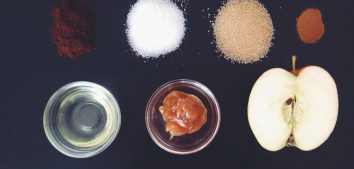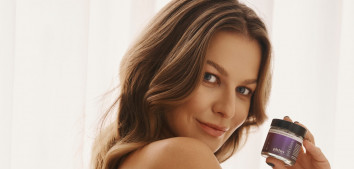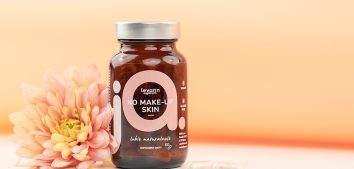
Cellulite
The influence of genes on what our body looks like
About 90% of women have cellulite. Including me.
No matter how hard we try, there are some things we can hardly change but only sometimes and only to some extent…
We know that such information as the color of our eyes, hair, facial features is stored in our DNA.
But that’s not everything! Our DNA also contains data on the ability of our body to metabolize various nutrients, as well as food intolerance or susceptibility to some diseases.
Scientists have studied and described genes that affect body weight. And it turns out there is also an obesity gene (FTO).
Its presence, however, should not be a reason for making excuses because only 10% of our weight is determined by the aforementioned genes, while our lifestyle accounts for 60% of our weight.
Yes, we may have some tendency to maintain proper body weight, but they do not determine what our weight or our body will finally look like.
With this knowledge, we can change a lot 🙂
What is cellulite and what are its types?
Cellulite (also known as “orange skin”) is a disease of connective and fatty tissue. The reason for its formation is enlargement and uneven distribution of adipose tissue and water. As estimated, this problem may affect up to 85% of women over 20 years of age. The location of cellulite in women most often includes: hips, abdomen, buttocks, thighs and arms. In turn, in men cellulite is most common on the stomach and neck. There are two main types of cellulite: water (otherwise known as hard) and fat (called soft).
Water cellulite is sometimes difficult to distinguish from the heavily developed muscle tissue, because the tissue is compact and tightly adheres to the muscles, and also does not change with the change of body position. This type of cellulite occurs most often in women who have not experienced fluctuations in body weight. Usually, the skin in places occupied with cellulite is dry, rarely rough. This type of cellulite may also be accompanied by stretch marks. Cases of this type of cellulite are also found in physically active women or teenagers.
Fatty cellulite does not adhere tightly to muscles and usually affects large areas of the body. In the case of this type of cellulite, the skin is usually swollen and wrinkled. This type of cellulite may appear in women who were previously physically active, who for some reasons gave up their activity, but most often occurs in people who are not very active, because it is associated with poor tension and flaccidity of the muscles. Fatty cellulite may also appear in women who have decreased their body mass too quickly as well as in people with genetic predisposition. Cellulite is also affected by dehydrating medications. In contrast to the form of a hard change in the shape of the skin surface, they change with the change of body position. This form often also has changes in the microcirculation. It should be emphasized that soft cellulite can also develop from a poorly treated hard form.
In addition to the two above-mentioned types of cellulite, we can also distinguish such types as: edema cellulite, mixed cellulite combining a hard and soft form and pseudo-cellulite, consisting of skin and subcutaneous tissue falling, mainly in the buttocks, thighs and arms.
How to deal with cellulite?
As I have already written, the key factors affecting our body weight are physical activity and diet. Below you will find some tips to help you look beautiful and win the fight against cellulite.
How about a diet? And which one?
“A diet” is just a short term for something I prefer to call a change in eating habits.
Now, our new way of eating should be personalized. There is no other solution and I’ve been highlighting this fact for a long time. And this is exactly the kind of diet I offer in my application.
To prove it, let me just remind you that our metabolism is also to some extent determined by our genes.
What does it mean?
This means each of us can have a perfect metabolism rate provided that our diet is individually tailored to our needs.
It’s not possible that a diet that is trendy at the moment will be good for everyone. That one menu will work for everyone.
It is a temporary solution and I would even say a risky one. Those who feel fine on a high-protein diet might not find e.g. Atkins diet good, and the other way round.
Therefore, remember that what’s good for your best friend doesn’t necessarily mean it’s the best form of nutrition for you.
The fact is that it will soon be possible to specify a proper kind of diet that would exactly match an individual thanks to… a blood test. The results will explain why a certain diet may benefit many people while being potentially harmful to others.
What kind of workout?
Any kind! As I have mentioned many times before, movement is beneficial not only for our body but also for our head.
If you want quick results, you should work out at least 3 times a week. There are already special workouts in my application which you can do outdoors or with a partner. Perfect for summertime!
There is just one more thing I would like to mention and it is the influence HORMONES have on our looks (I will be coming back to the topic soon).
I have been struggling with cellulite myself and as you know it plays tricks on us. Sometimes it’s more visible, other times you can hardly see it. For now, I have decided that only exercise and drinking lots of water help in the fight against “orange peel” skin.
Bibliography:
- Gałązka M, Galęba A, Nurein H. Cellulit jako problem medyczny i estetyczny – etiopatogeneza, objawy, diagnostyka i leczenie. Probl Hig Epidemiol. 2014;49(3):425-430.
- Janda K, Tomikowska A. Cellulit – przyczyny, profilaktyka i leczenie. Rocznik Pomorskiej Akademii Medycznej w Szczecinie. 2014; 60(1):29-38.
- Załęska-Żyłka I. Cellulit jako problem medyczny. Probl Hig Epidemiol. 2008;89(4):487-491.










Comments No Comments
Join the discussion…